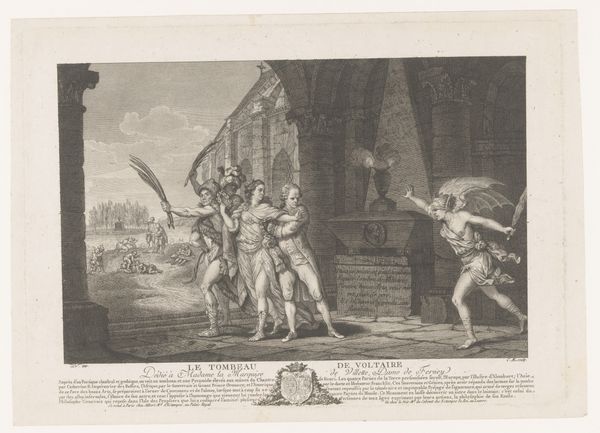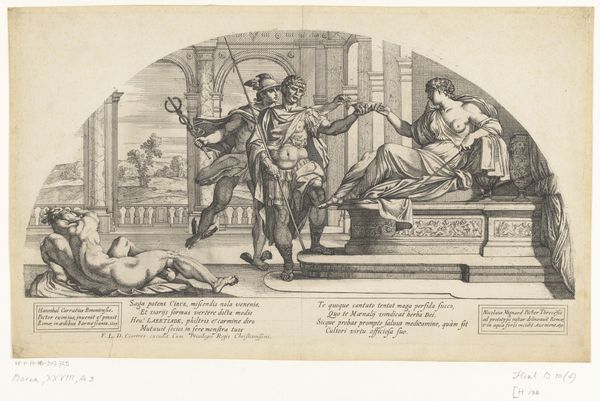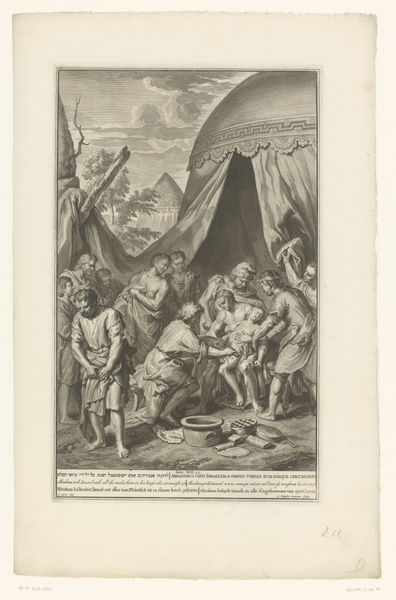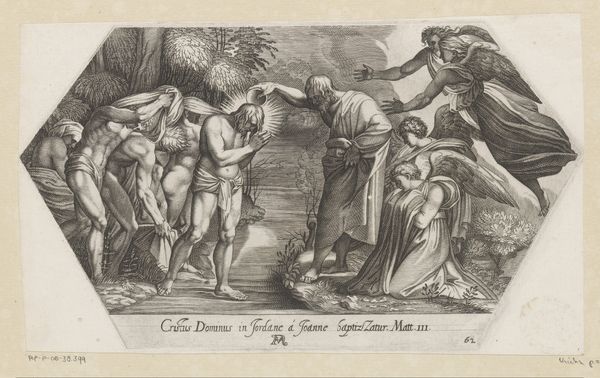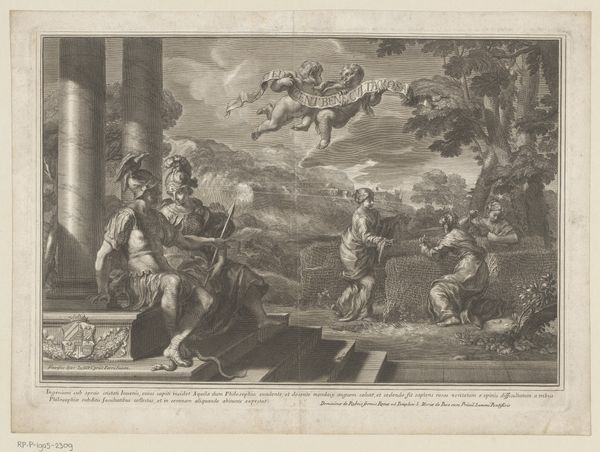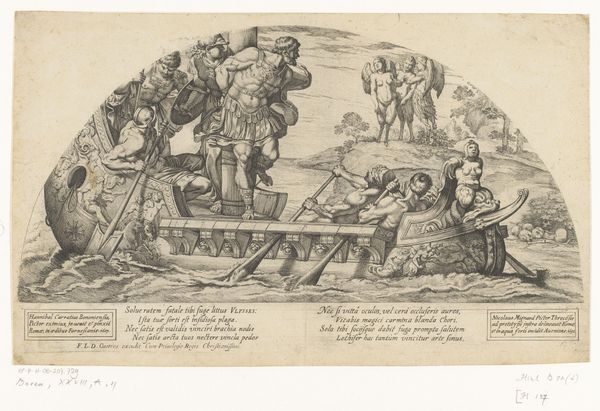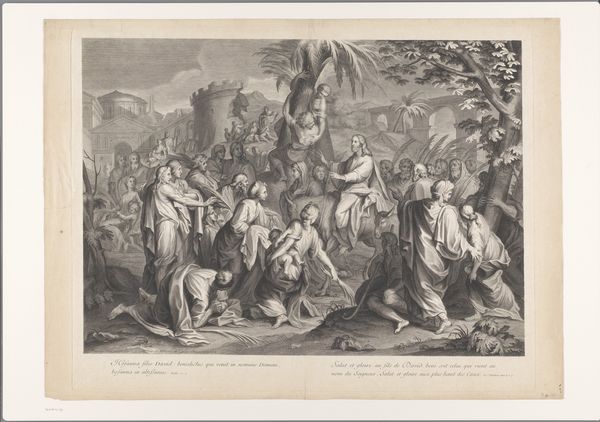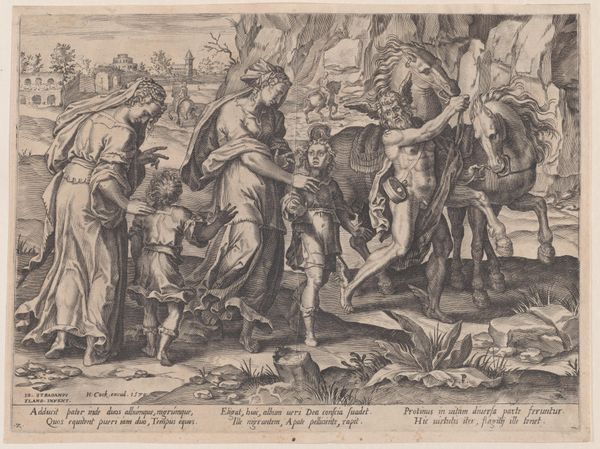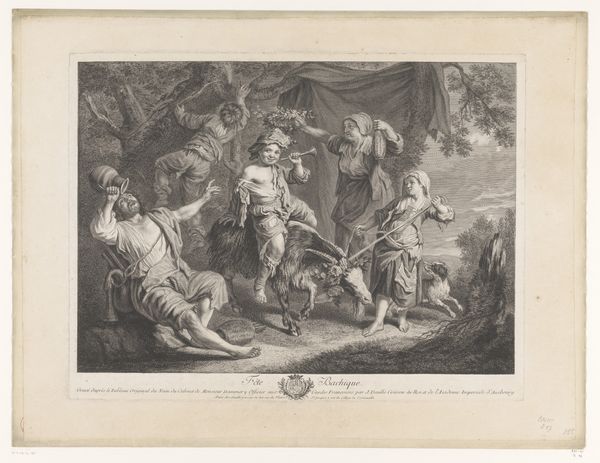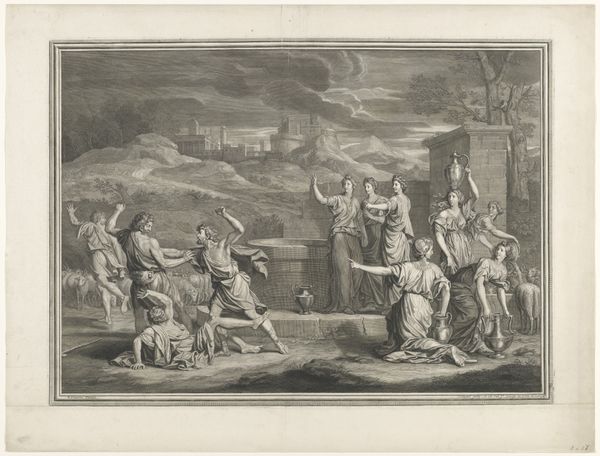
engraving
#
baroque
#
landscape
#
figuration
#
genre-painting
#
history-painting
#
engraving
Dimensions: height 246 mm, width 406 mm
Copyright: Rijks Museum: Open Domain
Curator: Welcome. Before us is "Arbeiders bezig met de verwerking van graan," or "Workers busy processing grain," an engraving created in 1703 by François II de Poilly. What strikes you upon seeing this, Editor? Editor: The relentless labor. All that back-breaking toil feels inescapable. You see no idleness here, just constant motion. It reminds us that so much labour goes into producing what we take for granted. Curator: Precisely. The composition directs our eye from left to right, mimicking the process of the harvest itself, guided by a consistent level of detail across the picture plane. The arrangement speaks to the order the artist seeks. Editor: Order perhaps, but I also see power dynamics inherent in the labor—the implied class divisions with some workers toiling, while others seemingly direct from a position of leisure, or benefit passively, mounted on the donkey, as if symbolizing burden bearing. Curator: It also emphasizes the temporal dimensions embedded in Baroque art; the active bodies represent both the labor involved and also evoke a continuous sense of movement across pictorial space. Editor: Beyond technique, doesn’t it raise critical questions about exploitation and land ownership in the pre-industrial agrarian era? This labor—likely performed by tenant farmers—fueled the wealth accumulation of the landed gentry, obscuring any romanticized notions. The very inscription is a reference to religious harvest and its bounty from Matthew, subtly normalizing their exploitation as though religiously condoned. Curator: I note the masterful handling of line, producing textures remarkably evocative for the engraving medium, a symphony of hatching that simulates light playing off different materials – wood, cloth, skin. De Poilly manipulates his medium skillfully. Editor: While I concur the textures are stunning, its value, for me, is what it prompts in a viewer to see. De Poilly captures not just a process, but a history of oppression encoded within everyday practices that speaks across centuries, prompting viewers to consider its lasting legacy. Curator: Yes. Whether admired for technical precision or inciting important critical commentary, I think "Arbeiders bezig met de verwerking van graan" holds complex aesthetic and social values to consider, depending on what meaning you ascribe to it. Editor: Indeed, an artwork offering us reflections not just about art, but also society and the way power structures echo through history and images.
Comments
No comments
Be the first to comment and join the conversation on the ultimate creative platform.
